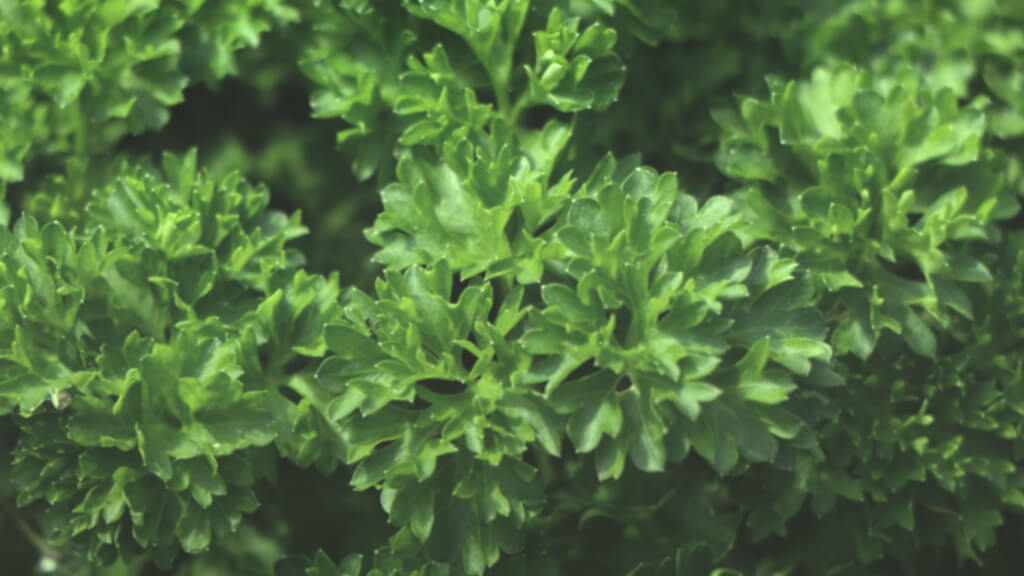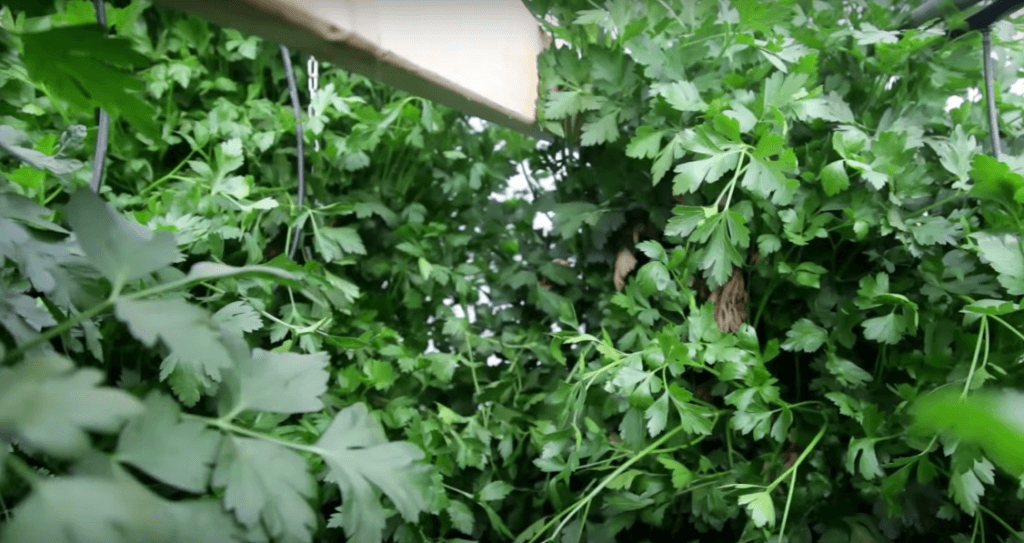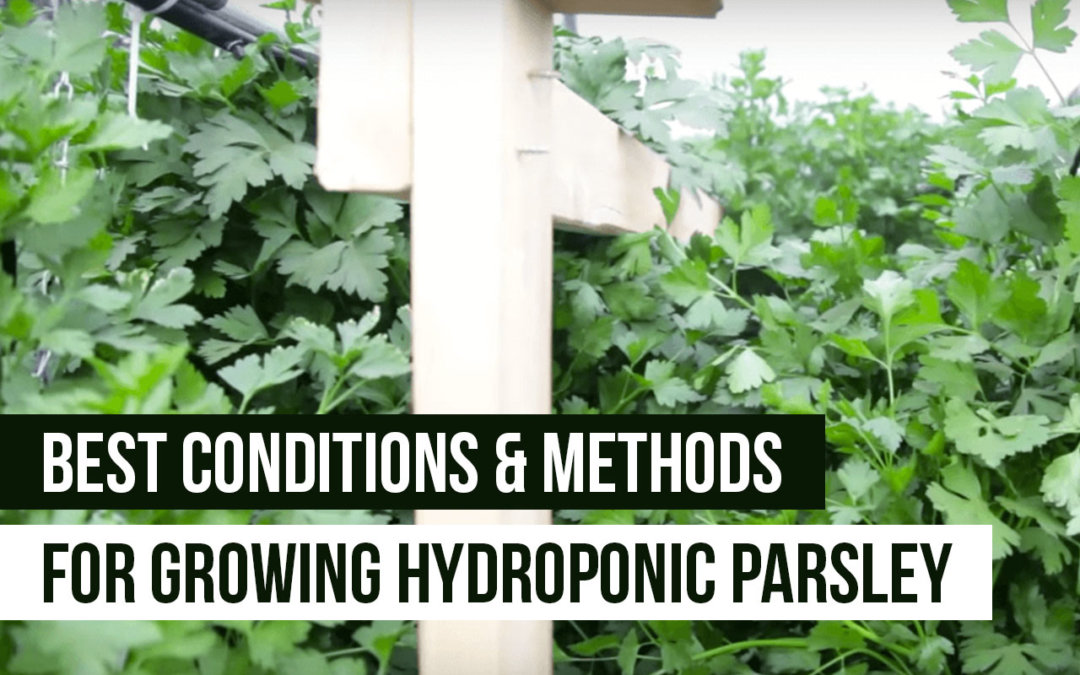Why parsley?
Parsley is a Mediterranean native used worldwide both as a garnish and as a popular addition to savory dishes. Several varieties of parsley exist, from the more bitter and frilly garnish parsley to the flavorful, tender large-leaf varieties. Though popular mostly as a cooking ingredient, parsley has been used in a variety of ways, from a medicinal ingredient to a symbol in ceremonies like the Seder dinner.

This is an example of a garnish parsley; it has frilly leaves and it’s tougher than the flat leaf parsley in the video below.
For many farmers, growing hydroponic parsley is a no-brainer. Farmers with markets for Italian herbs will surely find a place for parsley in their repertoire, especially tender varieties offered fresh—a far cry from the tough and wilted garnishes delivered to chefs and grocery stores after a long road trip.
Parsley’s tolerance of wide temperature and EC ranges make it an easy crop for farmers to add into a crop set. Large leaf varieties like Italian flat-leaf grow abundantly in hydroponics (or aquaponics), and farmers using ZipGrow Towers should plan on harvesting a lot of weight from the large plants, which grow 12–18 inches from the face of the Tower or media.
Ideal conditions
- EC: .8–1.8
- pH: 5.5–6.0
- Temperature: 60–75º F; very cold hardy
Parsley comes as an affordable seed and germinates within 3–4 weeks with good moisture. Seedlings are ready to transplant a few weeks later when they display their true leaves, and the first harvest typically happens 5–6 weeks after that.

Parsley can be harvested multiple times similarly to chives. Use shears or a harvesting knife to cut the crop down to 2–3 inches from the face of the Tower or the media, and keep the rest of the plant in the system to regrow. Another harvest may be taken about 3 weeks later.
We recommend starting a new cycle for parsley after the second harvest. Parsley yields can be very high in healthy hydroponic systems—one 5-ft ZipGrow Tower can yield 3–4 pounds each harvest.
Pests on parsley are rare, but the grower might see aphids or thrips.
Creating a crop list?
Choosing crops for your farm requires a balance of market information and crop suitability. Growers have to choose crops that have overlapping needs, like:
- pH range
- EC range
- Temperature range
Get this information for the most highly recommended crops for ZipGrow Towers in the Recommended Crop List.



Can pasley be grown both in grow tower as well as in nft. Can it be carried in temperature of 10oC to 35oC.
Hi Atma,
10º C is a little too cool and 35ºC is much too warm. Shoot for 15ºC–23ºC.
Hello Mia,
Is there “Determinate parsley seeds” for a continuous daily harvesting system?
Hello!
My parsley tends to be bitter, what could be a potential reason for that?
Marina
Hi Marina,
This could be caused by many things, but a good place to start is to see if 1) your parsley crop is old, and 2) your environment is too hot. As your parsley ages, it will become more and more bitter. In this case, it’s likely you want to replant and start fresh. If your environment is too hot, we recommend looking into some good cost-effective and sustainable cooling methods.
Just bought a bunch of towers; hoe many flat leaf parsley plants per tower? I grow mine bare roots, no media
What is the ph and ec levels for rocket and temperature? Can it be grown with parsley?
in a 7.5m wide x 100 m long greenhouse area having 5m gutter height, how many plants of parsley be planted and how many kilo of parsley per plant be expected in one year?